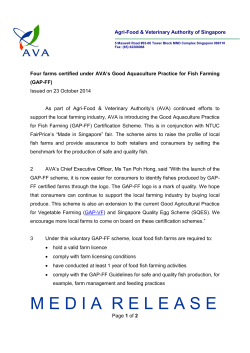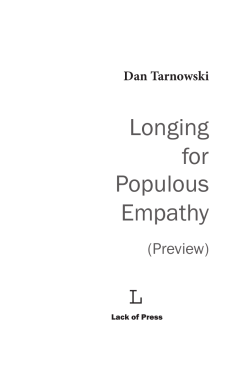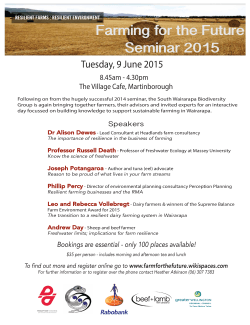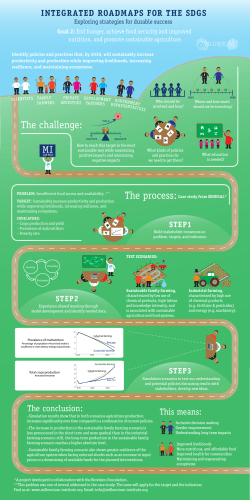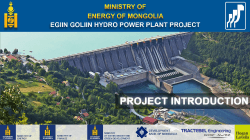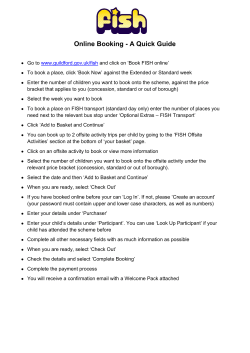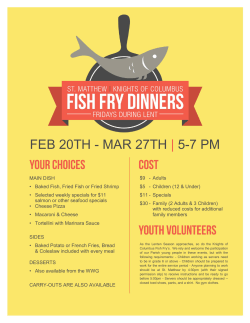
kadalekum kanivukal - Eprints@CMFRI
KADALEKUM KANIVUKAL
(Bounties of the Sea)
Farm School Series on marine fisheries
broadcast by All India Radio, Thrissur
Edited by
K.
RAVINDRAN
KRISHNA SRINATH
K.K. KUNJIPALU
V. SASIKUMAR
Published by
CENTRAL INSTITUTE OF FISHERIES TECHNOLOGY
Matsyapuri P.O., Cochin - 682 029
&
ALL INDU RADIO
Ramavarmapuram, Thrissur-680 631
MIXED FARMING OR POLYCULTURE
P.N. Radhakrishnan Nair
Central Marine Fisheries Research Institute
Cochin-682 014
&
S.M. Pillai
Central Institute of Brackishwater
Narakkal - 682 505
Aquaculture
In Kerala, nearly 75-80% of the population consume fish
and their annual per capita consumption rate is about 13 kg.
The rate of fish consumption is likely to go up due to increased
awareness about fish as a source of cheap and highly nutritious
but harmless food item. Hence there is every need to augment
fish production not only to meet our food requirements but also
to increase foreign exchange earnings. The current level of
fish production is inadequate to fulfil all these needs. An
analysis of the trend of fish production during the past few
years indicates that there may not be any significant
improvement in it in the coming years. In this context,
measures to increase fish production are to be thought of
Aquaculture is the only way to achieve this. In Kerala at
present aquaculture is restricted to backwaters and inland
waterbodies. In order to enhance fish production, farming of
fish and other species of aquatic organisms is to be extended
to inshore coastal waters for which suitable farming methods
are to be adopted.
Diff'erent species of fish, shrimps, lobsters, crabs and
molluscs are cultured in backwaters, ponds, reservoirs and
other inland water bodies. Shrimps, crabs and lobsters are
farmed in well prepared ponds. However, in this method of
farming the complete water column is not effectively utilized
for maximum production of useful organisms. The new method
of farming called mixed farming or polyculture helps in full
utilization of water column.
Culture of diversified candidate species together in the
same place at the same time is called mixed farming or
polyculture.
The candidate species selected should not
compete among themselves for space, food and reproduction.
80
For this type of culture it is therefore important to select
species which occupy different depth zones in the water
column. Both inshore and backwaters are more suitable for
this tjT3e of farming than freshwater systems. This is because
our coastal waters and backwaters are rich in species
diversity. The seed requirement for mixed farming can be
met from these areas. By adopting simple and easy collection
methods large quantities of seed can be collected. Seed can
also be obtained from commercial hatcheries operating in
public and private sectors.
Calm and shallow areas of the coastal sea which are less
than 10 m in depth and backwaters which remain brackish
throughout the year are ideal sites for mixed farming. Shallow
inshore places flushed by tidal flow in which 20-30% of the
water is periodically exchanged also are suitable for mixed
farming. The bottom of the farm area should be clayey, sandy
or rocky. Other aspects which are to be considered are
optimum conditions of temperature, salinity, pH and dissolved
oxygen. Abundant sunlight and enough seasonal rains enhance
the primary production of these areas which in turn reflects
in increased production and faster growth of the stocked
species. Inshore areas which are prone to heavy waves, strong
currents and cyclone are not suitable.
The species selected for culture can be grouped into
locomotory and sedentary types. Whereas finfish, lobsters,
crabs and shrimps are locomotory, organisms such as sea
cucumbers, seaweeds, mussels, edible oysters, pear oysters and
clams are sedentary. Clams, sea cucumbers, shrimps, crabs
and lobsters, which are mostly benthic are cultured in the
bottom layer. The mussels, pearl oysters and edible oysters
are farmed in the middle layer in ropes or cages suspended
from specially erected rafts. In the surface layer of one or
two metres depth, seaweeds are cultivated on specially
fabricated coir nets. Sluggish fish like groupers, sea bass,
crabs and lobsters are cultured in cages fixed close to the
bottom.
Cages of different sizes and shapes can be fabricated with
bamboo reepers, split branches of 'Oda maram' {Acacia
planifron), mid ribs of palmyrah leaves, ropes and nets. As
it is rather difficult to erect pens in the inshore coastal waters
and to prevent escape and entry of species from and into the
81
protected areas, it is desirable that the species selected should
be with restricted movement and fast growth. Nowadays there
is growing demand for live ornamental fish for export and it
will be more profitable to grow them in the polyculture systems
from where they can be easily caught unhurt and marketed
alive.
In brackish water and fresh water areas such as ponds,
canals and reservoirs, it is possible to culture different types
of fishes both small and large. In shallow regions of backwaters
having 1-2 m depth, pens can also be constructed using mats
prepared out of bamboo, palmyrah or arecanut tree trunks. In
these pens, shrimps, pearlspot, mullet, milkfish, crabs, etc. can
be grown. Simultaneously, depending on the salinity level,
clam, edible oyster and mussel can also be reared along with
these organisms.
It has been established that in brackish water ponds and
canal systems in coconut groves, different species of fishes and
shrimps can be profitably cultured without much investment.
MuUet, perlspot, milkfish and shrimps such as Penaeus
monodon and P. indicus are selected for culture in these areas
and production in the range of 2000 to 3000 kg in six months
to one year period is generally obtained. Production in the
order of 1000 to 2000 kg was achieved in one year by culturing
milkfish, mullet and pearlspot. Since it is possible to raise three
crops of shrimps and one crop of fish, mixed farming is an
expensive but profitable venture.
In mixed farming, the food requirement of the cultured
organisms is met from the surrounding water itself The
moUuscan forms consume micro-plankton, whereas the shrimps,
crabs and lobsters subsist on the benthic organisms and bottom
deritus. Ornamental fish feed on macro-plankton and hence no
artificial feed is required. But caged fish which are deprived
of free movement should be fed with suitable food from outside.
However, species which are cultured in confined areas and
ponds should be fed with artificial diets.
The major features of mixed farming are that different
sppcies can be reared together in the same period and the
production could be enhanced by the complete utilization of the
different layers of the water column. In this system the use
of feed is also minimum. The expenditure for fabrication of
82
cages, pens and rafts can be considerably reduced by using
locally available materials. The current demand for live fish
in foreign markets is also an encouraging factor for promoting
this type of venture. The mixed farming system can help to
generate more employment opportunities to the traditional
fishermen and their families. Above all, polyculture in a
confined area helps to enrich the total productivity of that area
which in turn attracts many other edible fishes to this area
for feeding. Exploitation of these fishes also will provide
additional income to the fishermen.
83
© Copyright 2025
